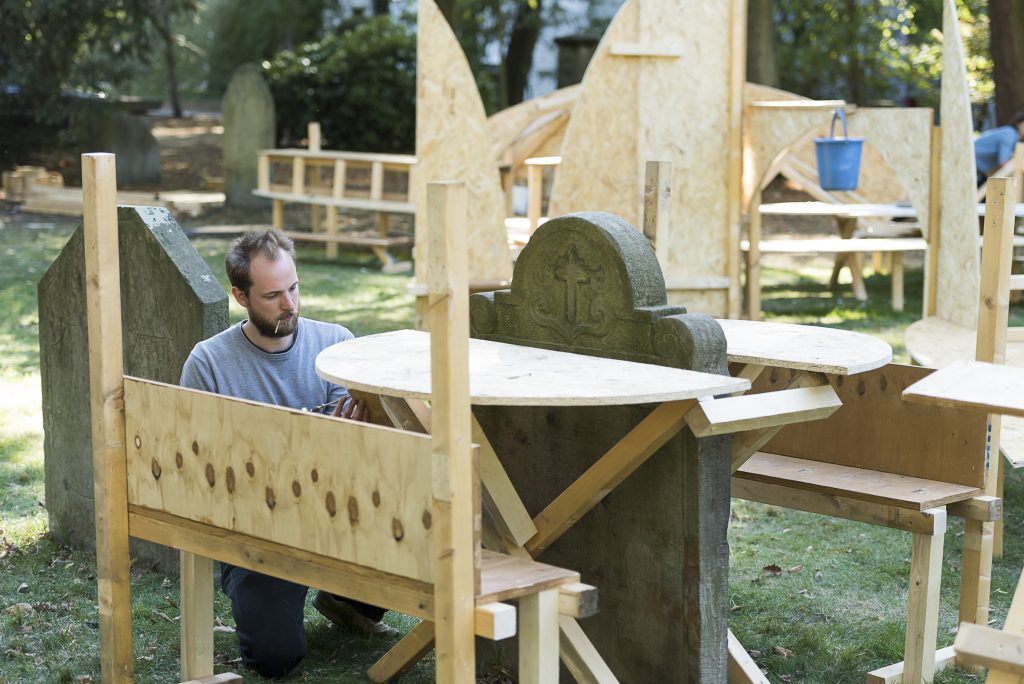THRESHOLDS Performance festival at the Golzheim cemetery curated by Nadia Ismail Saturday, 21 September 2019 from 2 pm to 8 pm Golzheimer Cemetery, Fischerstraße, Düsseldorf Patronage: Lord Mayor Thomas Geisel
Welcome:
Dr Michael Leistikow, 701 e.V.
Mayor Friedrich G. Conzen
Greeting:
Dr. Jutta von Zitzewitz, Foundation for German Undertaker Culture
Dr. Dieter Sawalies, “The Golzheim Cemetery should live” Association
Introduction:
Dr. Nadia Ismail, Curator
Participating artists:
Ella CB, Lisa Dreykluft, Ingke Günther + Jörg Wagner, Tomas Kleiner + Marco Biermann, Phonoschrank – Rüdiger Wenk, Studio Beisel – Kajetan Skurski + Laurenz Raschke, Thomas Zipp, Performative Installation: Jonathan Auth, Alexandro Böhme, Andreas Jonak, Paula Knaps Loos, Anna Maria Schkrob
Programme THRESHOLDS for download: THRESHOLDS_PROGRAMME2019
Video summary of the festival by Lucas Roenitz at: https://vimeo.com/383773750
Cemeteries are historical testimonies to urban planning developments and, for all their art-historically relevant formal language, are at the same time afflicted with an aura of taboo. For death and, even more so, dying are still largely excluded from society. Only slowly is a rethinking beginning. Through the influence of numerous cultures and growing technical progress, increasingly different forms of mourning rites are developing and differentiated needs are becoming apparent. Between tradition, enlightenment and financial pragmatism, the way we deal with mourning is culturally coded, but above all it is individually shaped. Thus, the nature, duration, length and handling of loss remain unique.
The performance festival THRESHOLDS, which in German translation means ‘(door) thresholds’, reflects on the various visible and invisible facets of the Golzheim cemetery through eight artistic interventions.
The invited artists react in different ways – musically, participatory or staged – to the visible but also hidden facets that characterise the place and thus make the diversity of rituals and cultural differences visible. In addition, the artistic interventions address transitions and changes and thus reflect the current complexity of the publicly accessible area.
PHOTOS: Katja Illner

































